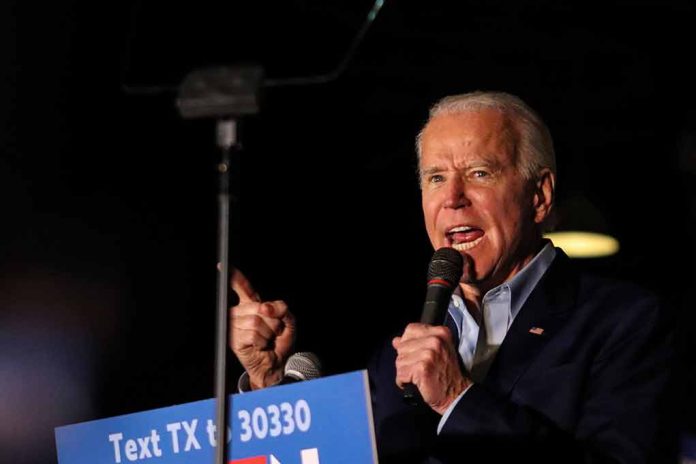
President Joe Biden’s executive action to ban offshore oil and gas drilling across vast swaths of U.S. waters raises questions about its impact on energy policy and the environment.
At a Glance
- Biden has extended an offshore drilling ban, covering another 625 million acres of U.S. waters.
- The decision has been praised by environmental and tribal groups, but criticized by oil industry and some politicians.
- It utilizes the 1953 Outer Continental Shelf Lands Act; rollback would require Congressional action.
- The move is viewed as a step toward clean energy but faced with partisan division.
Details of the Executive Order
The executive action taken by President Joe Biden prohibits oil and gas leasing in over 625 million acres of U.S. ocean territory, impacting areas in the Atlantic, Pacific, and the Northern Bering Sea in Alaska. The ban, significant in its scope, aims to address environmental concerns while protecting coastal communities from potential drilling damages, sparking widespread debate and drawing mixed reactions.
Environmental organizations and tribal entities have praised the move, highlighting that it safeguards vital ecosystems and prioritizes sustainable practices. Even those communities who have faced threats from potential oil spills applaud the decision. However, the oil industry has criticized the decision, viewing it as a misstep in the quest for energy independence.
Biden bans new drilling off nearly all US coasts https://t.co/uXF6itxlLo
— E&E News (@EENewsUpdates) January 6, 2025
Legal and Political Implications
Biden used the authority vested in the 1953 Outer Continental Shelf Lands Act to implement this extensive withdrawal of offshore areas from oil and gas leasing. Such a decision places the onus on Congress to reverse the ban, a challenging prospect given current partisan divisions. Critics, including the National Ocean Industries Association, argue that this move could undermine the nation’s energy independence and put a strain on American energy consumers.
In making this decision, Biden prominently cited events from the past, particularly the 2010 Deepwater Horizon oil spill, as lessons learned on the balance that must be struck between environmental protection and economic growth. Secretary of the Interior Deb Haaland reiterated this stance by underlining the administration’s commitment to shielding coastlines from what it deems unnecessary development.
Broader Impact and Future Considerations
Biden’s executive action marks a continuation of a bipartisan tradition of protecting U.S. coastlines from the risks associated with offshore drilling. While the immediate impacts of the ban are clear, the long-term consequences on the energy landscape remain uncertain. Future energy strategies must navigate the existing balance of environmental responsibilities and the nation’s energy needs, especially under the pressure of global market fluctuations and environmental changes.
The action also stirs debate over energy policies and how they tie into broader economic priorities. While Biden has proposed some limited oil and gas lease sales in areas like the Gulf of Mexico, it remains contentious whether such decisions suffice in addressing both environmental sustainability and the energy needs of the American public.
Sources
- Biden extends oil and gas leasing ban in Alaska’s Northern Bering Sea
- Biden bans new drilling off nearly all US coasts
- Biden bans new offshore drilling along most of the U.S. coastline
- Biden issues ban on offshore oil and gas drilling in most federal waters. Trump vows to undo it













